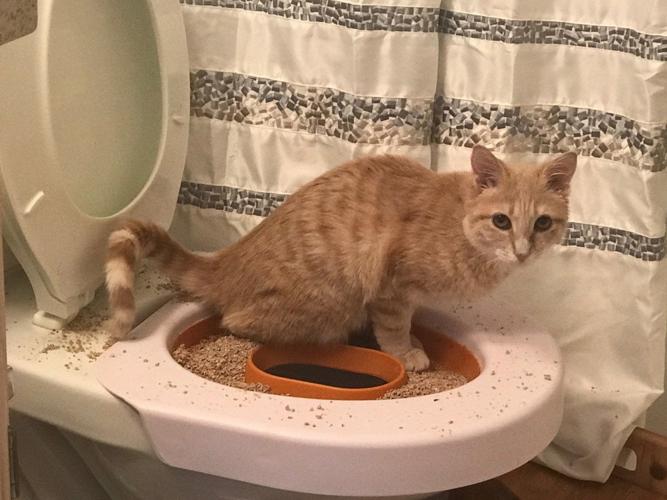Why You Should Never Flush Cat Poop Down Your Toilet - Critical Information
Why You Should Never Flush Cat Poop Down Your Toilet - Critical Information
Blog Article
We've encountered the article on Can You Flush Cat Poop Down The Toilet? down the page on the web and think it made perfect sense to relate it with you over here.

Introduction
As pet cat owners, it's essential to be mindful of exactly how we deal with our feline pals' waste. While it might seem practical to purge pet cat poop down the commode, this method can have damaging consequences for both the atmosphere and human wellness.
Alternatives to Flushing
The good news is, there are more secure and extra liable methods to get rid of cat poop. Take into consideration the following options:
1. Scoop and Dispose in Trash
One of the most typical approach of getting rid of pet cat poop is to scoop it into a naturally degradable bag and toss it in the trash. Be sure to utilize a committed clutter scoop and get rid of the waste immediately.
2. Usage Biodegradable Litter
Go with biodegradable cat litter made from materials such as corn or wheat. These litters are environmentally friendly and can be securely dealt with in the trash.
3. Bury in the Yard
If you have a backyard, consider hiding feline waste in an assigned location far from veggie yards and water sources. Make sure to dig deep sufficient to avoid contamination of groundwater.
4. Set Up a Pet Waste Disposal System
Purchase an animal waste disposal system specifically made for cat waste. These systems make use of enzymes to break down the waste, reducing odor and ecological influence.
Health Risks
Along with environmental worries, flushing feline waste can additionally position wellness risks to humans. Cat feces may contain Toxoplasma gondii, a bloodsucker that can create toxoplasmosis-- a possibly extreme health problem, especially for pregnant females and individuals with damaged immune systems.
Ecological Impact
Flushing pet cat poop introduces harmful microorganisms and parasites into the water, posturing a significant risk to aquatic ecosystems. These impurities can adversely influence aquatic life and concession water high quality.
Conclusion
Responsible pet dog possession extends past giving food and shelter-- it also entails appropriate waste management. By avoiding flushing pet cat poop down the toilet and going with alternate disposal methods, we can lessen our ecological footprint and shield human health and wellness.
Why Can’t I Flush Cat Poop?
It Spreads a Parasite
Cats are frequently infected with a parasite called toxoplasma gondii. The parasite causes an infection called toxoplasmosis. It is usually harmless to cats. The parasite only uses cat poop as a host for its eggs. Otherwise, the cat’s immune system usually keeps the infection at low enough levels to maintain its own health. But it does not stop the develop of eggs. These eggs are tiny and surprisingly tough. They may survive for a year before they begin to grow. But that’s the problem.
Our wastewater system is not designed to deal with toxoplasmosis eggs. Instead, most eggs will flush from your toilet into sewers and wastewater management plants. After the sewage is treated for many other harmful things in it, it is typically released into local rivers, lakes, or oceans. Here, the toxoplasmosis eggs can find new hosts, including starfish, crabs, otters, and many other wildlife. For many, this is a significant risk to their health. Toxoplasmosis can also end up infecting water sources that are important for agriculture, which means our deer, pigs, and sheep can get infected too.
Is There Risk to Humans?
There can be a risk to human life from flushing cat poop down the toilet. If you do so, the parasites from your cat’s poop can end up in shellfish, game animals, or livestock. If this meat is then served raw or undercooked, the people who eat it can get sick.
In fact, according to the CDC, 40 million people in the United States are infected with toxoplasma gondii. They get it from exposure to infected seafood, or from some kind of cat poop contamination, like drinking from a stream that is contaminated or touching anything that has come into contact with cat poop. That includes just cleaning a cat litter box.
Most people who get infected with these parasites will not develop any symptoms. However, for pregnant women or for those with compromised immune systems, the parasite can cause severe health problems.
How to Handle Cat Poop
The best way to handle cat poop is actually to clean the box more often. The eggs that the parasite sheds will not become active until one to five days after the cat poops. That means that if you clean daily, you’re much less likely to come into direct contact with infectious eggs.
That said, always dispose of cat poop in the garbage and not down the toilet. Wash your hands before and after you clean the litter box, and bring the bag of poop right outside to your garbage bins.
https://trenchlesssolutionsusa.com/why-cant-i-flush-cat-poop/

We hope you enjoyed reading our piece about How to Dispose of Cat Poop and Litter Without Plastic Bags. Thank you so much for taking time to browse our piece. Do you know about somebody who is truly interested in Don’t flush cat feces down the toilet? Take a moment to promote it. I enjoy reading our article about Don’t flush cat feces down the toilet.
Call Today Report this page